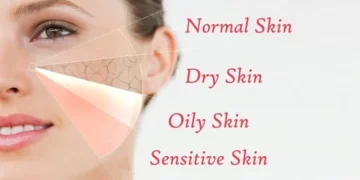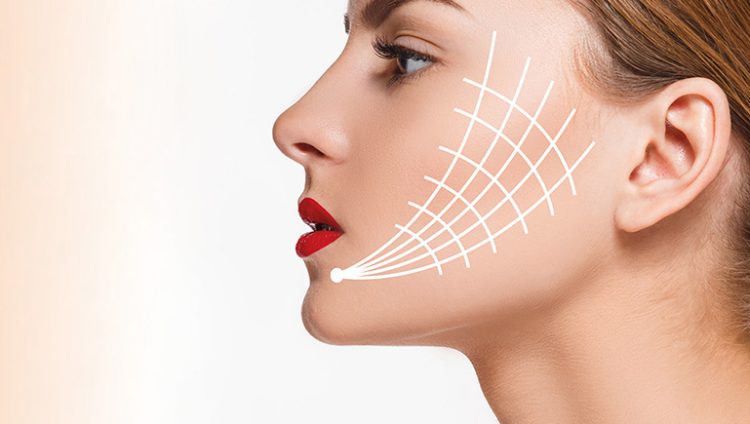Facial aging is a natural process that many people seek to address through cosmetic procedures. One of the most effective ways to combat sagging skin, loss of volume, and wrinkles is through facelift surgery. However, there are various types of facelift procedures available, each with its own set of benefits, effects, and risks. Understanding the different types of facelifts and how they compare in terms of results and potential complications is essential before making a decision about surgery.
In this article, we will delve into the most common types of facelift surgeries, including their effects, recovery time, and risks. Whether you’re considering a traditional facelift, a mini facelift, or a non-surgical option like thread lifting, understanding your options will help you make an informed decision.
1. Traditional Facelift (Full Facelift)
What It Is:
The traditional facelift (also known as a full facelift or standard facelift) is the most comprehensive type of facial rejuvenation surgery. It targets the mid-face, lower face, and neck to address signs of aging, such as sagging cheeks, jowls, and loose skin around the neck. This procedure involves incisions along the hairline, around the ears, and sometimes under the chin, allowing the surgeon to tighten the skin, reposition fat, and lift deeper tissues.
Effects:
- Dramatic Results: The traditional facelift provides the most noticeable and lasting results. It can take years off the face by tightening the skin, repositioning tissues, and smoothing out wrinkles.
- Full Rejuvenation: This procedure can address sagging skin in multiple areas, including the cheeks, jawline, and neck, offering a comprehensive lift.
- Natural-Looking Results: A skilled surgeon can deliver a rejuvenated but natural appearance, avoiding an overly tight or artificial look.
Risks:
- Scarring: The incisions used in a traditional facelift are longer, which can result in visible scars. However, the scars are usually well-hidden around the hairline, behind the ears, or under the chin.
- Extended Recovery: Recovery time for a traditional facelift is longer compared to other facelift options. It typically requires 2 to 4 weeks for initial recovery, with full results visible in about 6 months.
- Complications: There are risks of complications like hematoma (a collection of blood under the skin), infection, and nerve damage. In rare cases, patients may experience skin loss or poor wound healing.
- Asymmetry: While not common, some patients may develop asymmetry if the skin or muscles heal unevenly.
2. Mini Facelift
What It Is:
A mini facelift is a less invasive version of the traditional facelift, targeting the lower face and jawline. It’s ideal for people with mild to moderate sagging and those who don’t yet need a full facelift. The procedure uses shorter incisions, typically around the ears, and requires less lifting and tightening of the deeper facial tissues.
Effects:
- Subtle but Effective Results: The mini facelift provides a more subtle lift than a traditional facelift, focusing on the lower face and jawline. It can improve the appearance of jowls, sagging skin, and fine lines.
- Quicker Recovery: Recovery time is generally shorter, with most patients returning to their normal activities within 1 to 2 weeks.
- Less Invasive: The procedure is less invasive than a full facelift, and as a result, the risks and recovery time are reduced.
Risks:
- Less Dramatic Results: While effective for minor signs of aging, a mini facelift may not deliver as dramatic results as a full facelift, especially for patients with more severe sagging.
- Scarring: While the incisions are smaller, there is still the risk of visible scarring, though they are typically hidden in the natural creases around the ears.
- Temporary Results: While the results are usually long-lasting, they may not last as long as a traditional facelift (typically around 5 to 7 years), requiring touch-ups or additional procedures down the road.
3. Thread Lift (Non-Surgical Facelift)
What It Is:
A thread lift is a minimally invasive facelift option that uses dissolvable threads to lift sagging skin. The threads are inserted under the skin through small incisions using a needle. Once in place, the threads are tightened to lift the skin, and over time, they stimulate collagen production, further improving skin texture and firmness. Thread lifts are considered a non-surgical option that is often referred to as a “lunchtime lift.”
Effects:
- Subtle Lift: Thread lifts provide a more subtle lift compared to surgical facelifts but are effective for early signs of aging, such as mild sagging and fine lines.
- Quick Results: Results are visible almost immediately after the procedure, and the skin continues to improve over the following months due to the collagen stimulation.
- Minimal Downtime: Recovery time is minimal, with most patients able to return to work and regular activities within 1 to 3 days.
- Short-Term Results: The effects of a thread lift typically last around 1 to 2 years, after which a repeat procedure may be necessary.
Risks:
- Temporary Results: The results of a thread lift are temporary, and the effects may diminish after a couple of years.
- Infection: As with any procedure that involves puncturing the skin, there is a risk of infection at the insertion sites.
- Uneven Results: While thread lifts can provide a lifted appearance, some patients may experience uneven results or visible threads under the skin.
- Skin Irregularities: In rare cases, the threads may cause the skin to become bumpy or irregular if not properly placed.

4. Mid-Facelift
What It Is:
The mid-facelift focuses on lifting and rejuvenating the cheeks, under-eye area, and nasolabial folds (the lines between the nose and mouth). This procedure typically involves incisions inside the mouth or near the hairline, which makes it less invasive than a full facelift while still targeting the mid-face for dramatic improvements.
Effects:
- Targeted Rejuvenation: A mid-facelift is ideal for individuals with sagging cheeks and the appearance of deep nasolabial folds, offering a youthful, rejuvenated appearance in the central part of the face.
- Less Downtime: Compared to a full facelift, recovery from a mid-facelift is quicker, with patients typically resuming normal activities after 1 to 2 weeks.
- Long-Lasting Results: The results of a mid-facelift can last 5 to 10 years, depending on factors like age, lifestyle, and skin type.
Risks:
- Scarring: As with other surgical facelifts, scarring is a risk. However, the incisions are often hidden inside the mouth or along natural skin folds, minimizing visible scarring.
- Temporary Swelling and Bruising: The recovery period includes some swelling and bruising, which may last for several days to a week.
- Nerve Damage: In rare cases, nerve damage may occur, leading to temporary facial weakness or numbness, though this usually resolves over time.
5. Liquid Facelift (Non-Surgical Facelift)
What It Is:
A liquid facelift is a non-invasive treatment that uses injectable dermal fillers (such as hyaluronic acid) and Botox to lift and plump the skin. By filling in areas of volume loss (like the cheeks or temples) and relaxing muscles that cause wrinkles, this procedure creates a youthful appearance without the need for incisions or surgery.
Effects:
- Instant Results: A liquid facelift provides immediate results, with patients seeing improvement in the appearance of wrinkles, volume loss, and sagging areas.
- No Downtime: There is no recovery time required, and patients can return to their regular activities immediately.
- Subtle Lift: Although the results are subtle, a liquid facelift can significantly improve the appearance of sagging skin and wrinkles without surgery.
Risks:
- Temporary Results: The effects of a liquid facelift are temporary, typically lasting between 6 months to 2 years, depending on the products used.
- Bruising and Swelling: Some mild bruising or swelling may occur at the injection sites.
- Asymmetry: If the filler is unevenly distributed, it may result in temporary asymmetry, which can often be corrected with additional treatments.
Conclusion
Choosing the right facelift procedure depends on the degree of aging you’re looking to address, your desired results, and your willingness to undergo surgery. Here’s a quick summary of the options:
- Traditional Facelift: Provides the most dramatic and long-lasting results, ideal for significant facial aging.
- Mini Facelift: Best for those with moderate sagging who want a less invasive, quicker recovery option.
- Thread Lift: A non-surgical option that provides subtle lifts with minimal downtime but offers temporary results.
- Mid-Facelift: Focuses on rejuvenating the cheeks and under-eye area, with quicker recovery than a full facelift.
- Liquid Facelift: Non-surgical and ideal for those seeking a quick, temporary solution without downtime.
Each procedure comes with its own risks and benefits, so it’s important to consult with a qualified plastic surgeon or aesthetic doctor to determine which approach will help you achieve the best possible results for your skin and lifestyle.












































